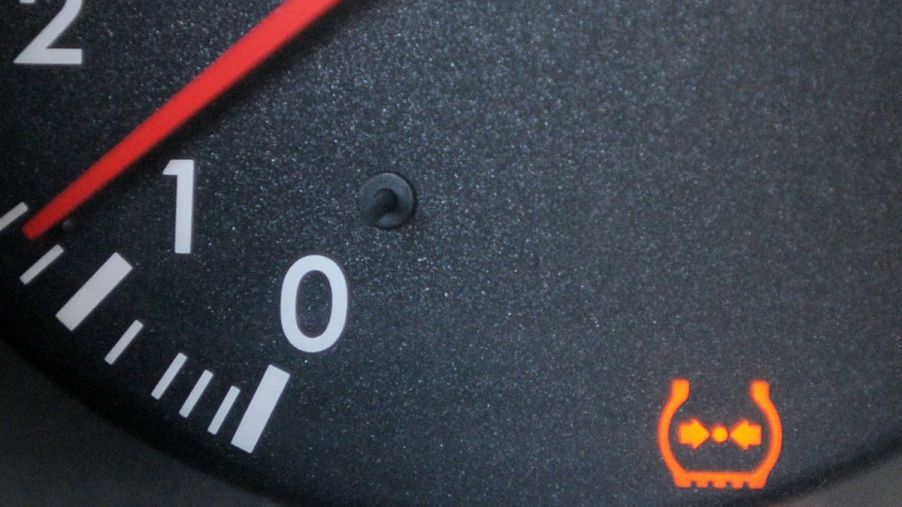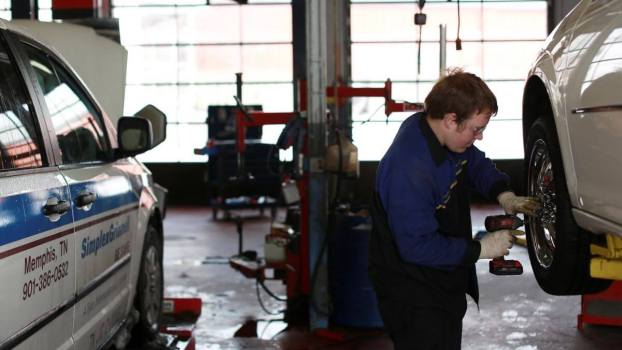
How to Read the Tire Pressure Monitoring System (TPMS) Light in Your Car
Sometimes your car’s dashboard can light up like the Las Vegas Strip, especially if you own an older model. With so many visual warnings, drivers can sometimes make a habit of ignoring them. However, ignoring a Tire Pressure Monitoring System (TPMS) warning can be a costly mistake or even one with potentially deadly consequences. So, what is a TPMS, how does it work, and how can you read its signals?
What is a TPMS?
As the name implies, a Tire Pressure Monitoring System (TPMS) is a safety monitoring system that gauges the pressure of a vehicle’s tires. The TPMS warning is illustrated by a yellow light on the dash with an exclamation point surrounded by a horseshoe shape and tire treads on the bottom. It is activated when the monitoring system detects the pressure in one or more tires is too high or low.
Overinflation or underinflation shouldn’t be ignored
Overinflation, when tire pressure is too high, can lower the traction of tires, leading to a potentially dangerous loss of grip. Less critically but still a nuisance, overinflation also leads to harsher ride quality, as excessive air pressure lessens a tire’s ability to soak up road impacts.
Underinflation can result in excessive heat buildup. In a worst-case scenario, severe heat buildup can cause a sudden and dangerous blowout due to the tire and its carcass separating. Another dangerous aspect of underinflated tires is added wear on tires, lessening their grip and potentially leading to more severe issues. Additionally, tire response is mitigated by underinflation, and fuel economy can suffer.
Critically, both overinflation and underinflation can cause tires to wear prematurely, resulting in dangerous tire wear that can lead to punctures, blowouts, or a loss of road-holding ability.
How to read a Tire Pressure Monitoring System warning
While a TPMS light illuminating will tell you there is some issue with the pressure of your tires, there are several ways in which the warning can appear that can tell you more specifically the issue at hand.
According to Priority Tire, if the TPMS light illuminates while driving and remains on, it’s signaling either one or more tires is not operating at a safe pressure.
The TPMS warning may also illuminate but turn off and on, usually turning on when the vehicle is started and turning off after heat buildup in the tires through driving. These instances are generally triggered by ambient temperature changes altering the pressure in the tire, particularly when outside temperatures change drastically over the course of a day.
The TPMS light may also flash, typically for about a minute after the engine turns over. A flashing TPMS alert is a warning the system isn’t working properly and isn’t effectively monitoring tire pressures.
What to do if your TPMS light illuminates
If your TPMS light illuminates, the first step you should take is to manually check the pressure of your tires using a gauge or take the vehicle to a service station. You can check recommended air pressures through a white and yellow label on the driver’s side door. However, it’s important to note the recommended pressure listed on the label should be achieved when the tires are cold, so if you’ve been driving for a while and the tires are hot, the only way to get an accurate reading is to give them some time to cool down before using a pressure gauge. Once you have an accurate pressure reading, either inflate or deflate your tires to their recommended level.
If you receive a TPMS flashing signal, the system will need to be inspected by a mechanic to fix the issue causing it to function improperly.
It should also be noted that a TPMS should not act as a substitute for manual tire pressure checks. A TPMS cannot always account for an added load the vehicle is carrying, and there is always the chance the TPMS is not accurately monitoring actual tire pressures. Checking manually is a surefire way to know with certainty your tires are correctly inflated.
According to tire manufacturer Bridgestone, you should manually check the pressure in your car’s tires each month before taking a long trip or when “carrying extra load.”




